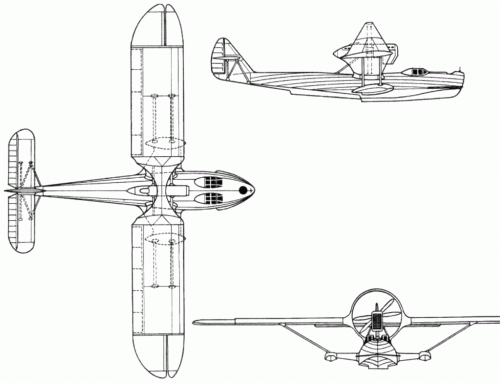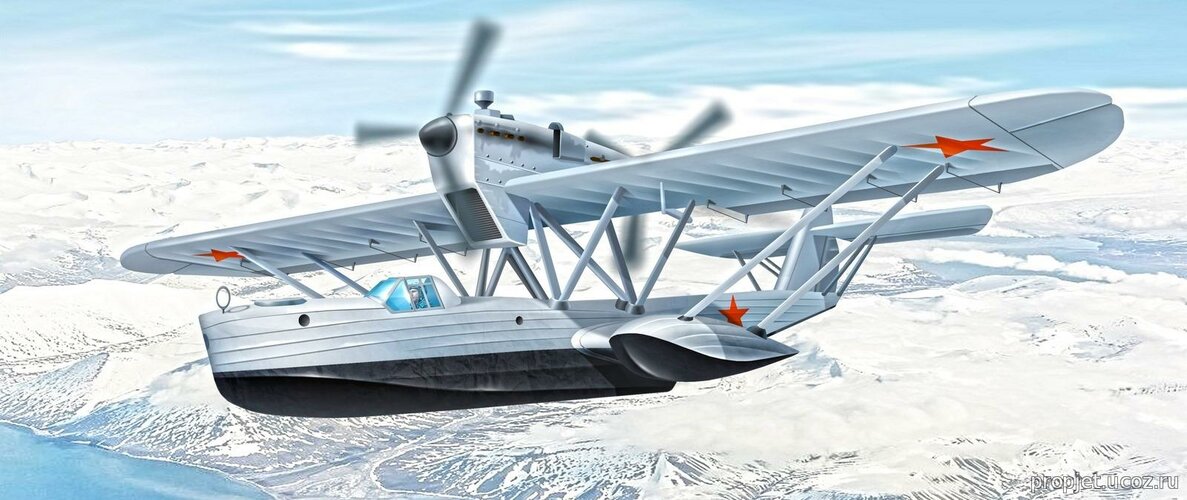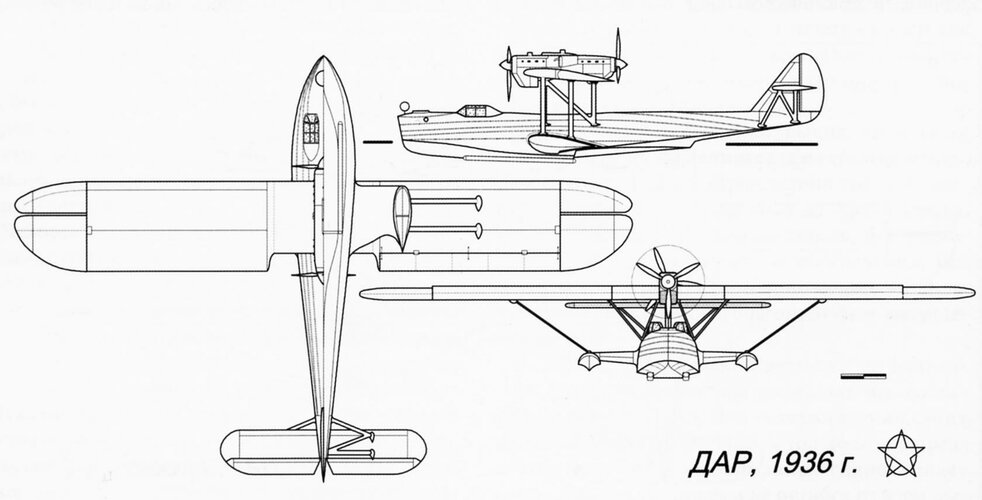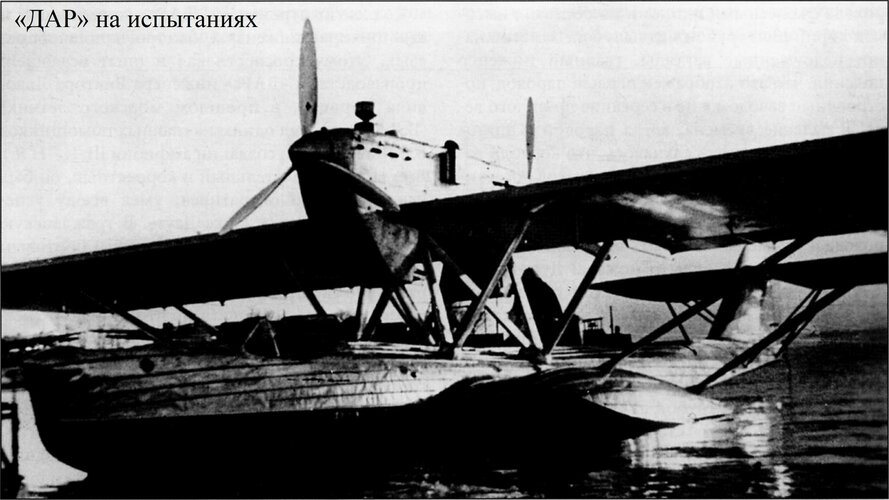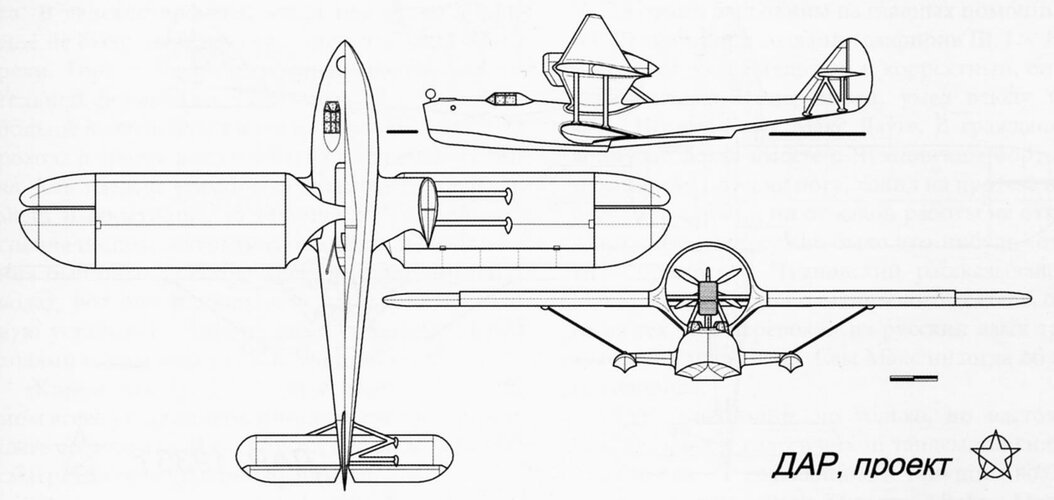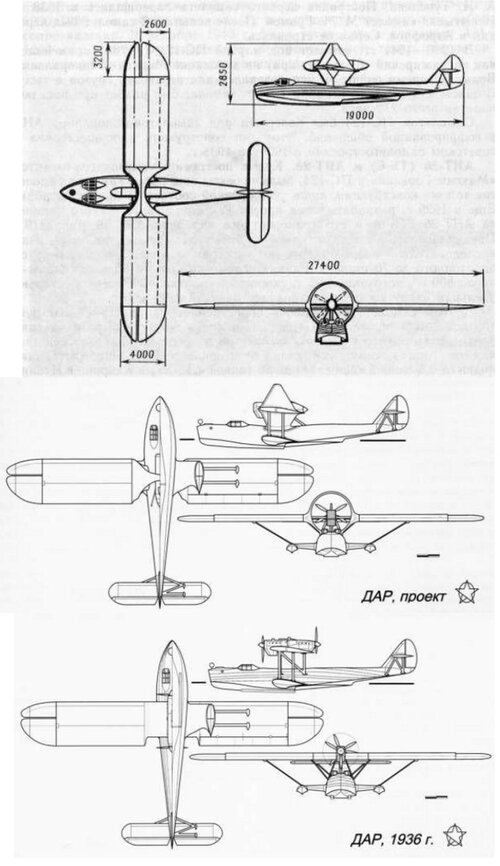During the second five-year period, the Northern Sea Route began to be actively explored. Aviation played an important role in this matter. However, aircraft adapted to operate in the specific conditions of the Arctic, almost did not build. Decommissioned military vehicles or conventional transport aircraft were used for air transport and ice reconnaissance.
At the suggestion of the famous polar pilot B.G. Chukhnovsky group of designers, led by R.L. Bartini, were instructed to design a special aircraft suitable for work in the North, in particular, for ice exploration and wiring of caravans of ships.
Such a DAR aircraft (a distant Arctic reconnaissance aircraft) was built at the end of 1935. Its scheme is a flying boat with two engines of 860 hp, capable of landing on water, snow and ice and take off from them. The hull of the boat, the wing frame (its area is 100 sq m) and the plumage - stainless steel. The cladding is a canvas. To free the rear of the wing, under the powerful landing flaps on the aircraft for the first time in the world used double aleron. The aircraft had good flying and operational qualities.
When finding a seaplane on water, snow or ice "gills" with floats that had a "track" equal to 7.0 m, provided it with cross-resistance, and in flight created additional lifting force. The long-term and transverse shape of the bottom of the two-operated boat DAR was chosen from the conditions of ensuring not only good seaworthiness, but also the possibility of taking off and landing on ice or snow, exiting the water on a flat ice or snowy surface if necessary. In this regard, the DAR aircraft used a boat close in shape to the boat of the Dorner Val aircraft, which at the end of the front redana had a flat transverse platform, smoothly moving towards the nose to the usual weak keeled shape. To improve the sliding cushioning properties of the flat ice redening of the DAR aircraft, which was 1 m wide, special 320 mm-wide hollows were installed at its edges, with internal depreciation. They were made of stainless steel with corrugated side walls allowing vertical movement, and rubber cameras inside the runners, which depreciated the landing impact and made the plane land on a hard surface quite soft.
In addition, measures were taken to reduce the landing speed of the DAR aircraft: its wing had a relatively small load on the area (72 kg/sq.m) at normal flight weight, on the rear edge of the wing of the aircraft by 77% of the half-swing installed very effective landing shields of the type of Tsap, and at the ends of the wing there were so-called "floating eleroons" whose rear sections could simultaneously deviate downwards and work as landing shields.
After landing on the water went out on the ice, and then took off from the ice and snow. The DAR speed is 240 km/h, the ceiling is 5500 m, the range is up to 2000 km. The weight of the empty is 4,820 kg, the normal take-off is 7,200 kg, in the overload version up to 9000 kg.
The DAR aircraft underwent factory flight tests in late 1935 and spring 1936. B.G. Chukhnovsky flew with flight mechanic V.I.Chechin and lead engineer I.A.Berlin. During the tests, the ups and downs were performed from the water and landing on the ice. After landing on the water DAR could independently steer ashore and continue the flight, taking off from the ice. In the overload version with full fueling and with a flight weight of 9000 kg, the duration of the FLIGHT DAR reached 20 hours.
However, despite the rather good characteristics and order of five DAR aircraft by polar aviation, they were not mass-produced, mainly because of the complexity of production: the domestic industry at that time did not yet have in the right amount of complex welding equipment, able to ensure the production of even a small series of such aircraft.
Simultaneously with the work on the DAR aircraft, which had a number of unique properties, the design team of I.V. Chetverikova led the development of the long-range Arctic reconnaissance ARC-Z, which was a conventional twin-engine seaplane with smaller geometric dimensions and mass than the DAR R.L. Bartini, but with a much higher speed and maximum flight range of up to 3000 km.
Specifications:
Modification : DAR
Wingspan : 27.40m, Length : 19.00m, Height : 2.85m, Wing area : 100.0m2
Weight, empty aircraft : 4820kg, Normal takeoff : 7200kg, Maximum take-off : 9000kg
Engine type : 2 x Hispano-Suiza 12, Power : 2 x 860hp
Practical range : 2000km, Service ceiling m 5500m, Crew: 2.


